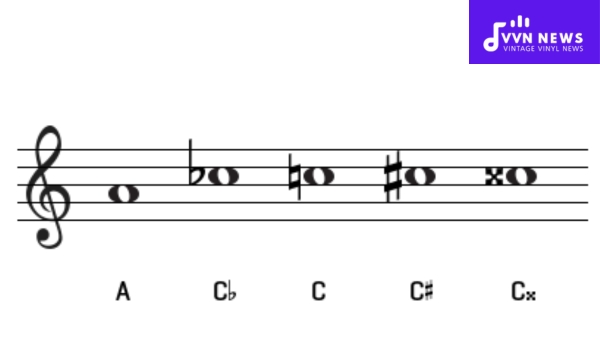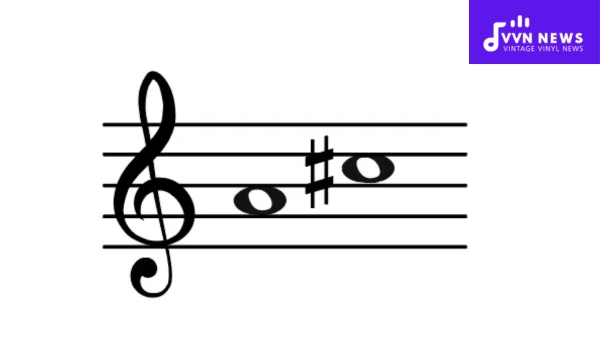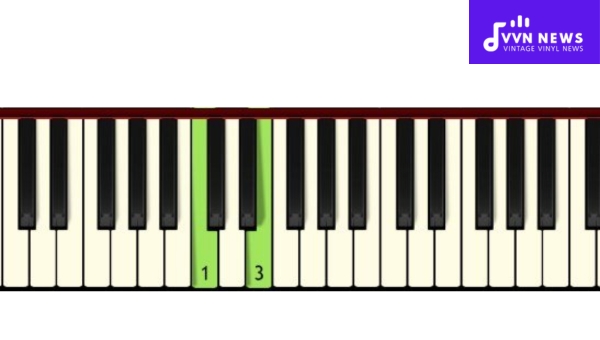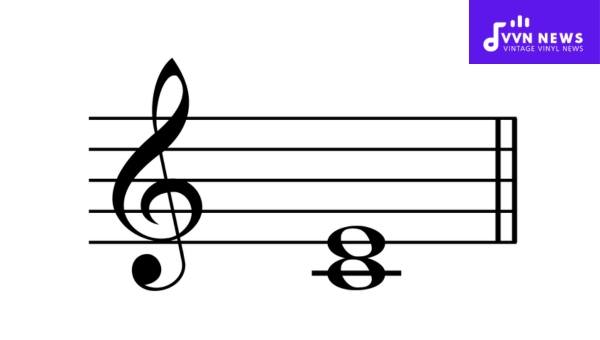From foundational melodies to complex harmonies, music has a beautiful way of touching our hearts and souls. For those seeking to understand its intricate language, the major 3rd intervals emerge as a fascinating aspect worth highlighting.
This particular interval is one of those truly magical pieces in the beautiful puzzle that is music theory.
Major 3rd intervals forge quintessential connections within chords and scales that are often overlooked despite their massive influence over harmony and tonality.
Now, let’s turn our attention to these significant intervals, illuminating their characteristics and divulging their presence in the music you love.
What is a Major 3rd Interval?
In music theory, the major 3rd interval spans four half-steps or semitones. Picturing a piano keyboard, if you start at note C and count up to E (C-D-E), that’s a major 3rd.
Harmonically, this interval is joyous and stable, commonly found in major triads, which are the bedrock of Western harmony.
Melodically, it creates a sound that’s uplifting and bright. Recognizing it is key for musicians, as it helps in building chords, improvising melodies, and developing an intuitive sense of harmonization.
It’s that warm leap in a lullaby or the harmonic anchor in countless tunes across genres.
Also Read: Ear Training: Master Music Skills with Expert Techniques
Can You Give Examples of Major 3rd Intervals?
When delving into the world of major 3rd intervals, both ascending and descending patterns hold significance.

Let’s explore these intervals distinctly.
Ascending Major 3rd Intervals
In an ascending major 3rd, the note is four half-steps higher than the starting note.
Looking at the classic C major scale, a leap from C to E exemplifies this jump. Here’s a quick rundown of other ascending major third intervals on each scale degree:
- C to E
- D to F#
- E to G#
- F to A
- G to B
- A to C#
- B to D#
Descending Major 3rd Intervals
The story slightly twists with descending intervals; these are essentially inverted ascending intervals.
An easy way to grasp this concept is by inverting the ascending examples:
- E to C
- F# to D
- G# to E
- A to F
- B to G
- C# to A
- D# to B
Each interval possesses its color and emotive quality — vital for musicians aiming for expressive playing or singing.
These examples merely scratch the surface but should equip you with the core idea behind this enthralling musical component.
Also Read: Mastering Chords In A Minor [Improve Your Composition Skills]
What are the Qualities of Major 3rd Intervals?
When exploring major 3rd intervals, their distinctive characteristics make them a staple in the construction of music.
A major 3rd spans four half steps or semitones, bridging two notes that together convey a sense of happiness and stability.
Let’s dive into the inherent properties that set these intervals apart.
Harmonic Vibrancy
Major 3rd intervals possess a resonant quality contributing to their bright and consonant sound.
This harmonic vibrancy serves as building blocks for major chords, which fundamentally shape the tonality within Western music.
Emotional Color
In the realm of emotion, they impart an unmistakable warmth, often associated with positive and uplifting moods.
This influences how a melody is perceived, tinging it with a cheerful color that resonates with listeners on an emotional level.
Structural Role
As for structure, major 3rds help form the basis of not only major chords, but also augmented triads when paired with another major 3rd on top.
Their role extends into defining key signatures and diatonic functions within scales.
Melodic Movement
From a melodic standpoint, these intervals enable smooth transitions between notes.
They allow composers and performers alike to navigate through scales with fluidity while maintaining tonal coherence.
In performance and songwriting contexts, recognizing a shift from E to G# or C to E exemplifies how these intervals create an intuitive movement in melody lines.
The leap they provide can add both lyrical progression and emotional depth to compositions.
How do you identify Major 3rd intervals by ear?
Identifying major 3rd intervals by ear is a core skill for musicians, enabling them to interpret and create music with greater nuance.

Here are concise steps to help you recognize this fundamental interval:
- Start with reference songs: Familiar tunes can be an excellent tool for interval recognition. The beginning of “When the Saints Go Marching In” or “Kumbaya” outlines a major 3rd. Use these as auditory anchors.
- Listen for the distance: A major 3rd spans four semitones, like the gap from C to E on a keyboard. This creates a distinct sound that is neither too close like a minor 3rd nor too far like a perfect 4th.
- Memorize the sound pattern: A major 3rd has a bright and happy quality. Frequent listening and singing back these intervals solidify their sonic fingerprint in your memory.
- Practice with an instrument: Play random notes on your instrument followed by their respective major 3rd above. Active engagement paired with attentive listening accelerates proficiency in identification.
- Employ solfège syllables: Sol-fa names such as “Do” to “Mi” correspond to a major 3rd interval. Practicing solfège enhances your ability to mentally hear and identify intervals without external aids.
By incorporating these strategies into regular practice sessions, you will develop an intuitive sense of recognition for major 3rd intervals, elevating your overall musicianship.
Also Read: How To Transpose Music? [Simplifying Key Changes In Songs]
Techniques for Playing Piano in Major 3rd Intervals
To adeptly navigate major 3rd intervals on the piano, a synthesis of finger positioning and practice routines is essential.
The texture of your compositions or improvisations will noticeably enrich with this skill under your belt.
Mastering Finger Placement
For starters, accurately space your fingers to bridge the gap of four semitones that constitute a major 3rd.
Consider an exercise where you alternate your thumb (1) and middle finger (3) on C and E respectively.
Subsequently, mirrors the pattern throughout various octaves, emphasizing fluidity and precision.
Utilizing Practice Drills
A beneficial drill involves hopping from one major 3rd to its octave counterpart across the keyboard.
This leap compels hand coordination and strengthens spatial awareness.
Strengthening Muscle Memory
Engage consistently in exercises that revolve around scales incorporating major 3rds.
Repeating scales like the C major scale, where E to G# (a raised fifth) formulates a sequence of two consecutive major thirds, can etch the interval’s feel into muscle memory.
Embracing Scales and Arpeggios
Delving into arpeggios which pivot around intervals like E major or A minor could propel proficiency.
The triad arpeggio drill especially shines, where leaping from the root to major third, then fifth, hones invulnerability against common slips.
By fusing these techniques with persistent practice sessions, pianists can achieve a natural grasp over weaving major 3rd intervals into their melody-making fabric.
Also Read: D Sharp Major Pentatonic Scale [A Bright And Positive Tone]
How do Major 3rd intervals relate to the whole tone scale?
A whole tone scale, consisting of six consecutive whole steps, produces a series of pitches each separated by the interval of a Major 2nd.

Within this framework, nonadjacent notes form Major 3rd intervals. For instance, take the C whole tone scale: C, D, E, F# (Gb), G#, and A# (Bb). The notes C and E are a Major 3rd apart, as are D and F#, E and G#, and so on.
These intervals contribute to the scale’s unique equidistant and symmetrical structure. By skipping one note in a whole tone scale sequence, you consistently land on a pitch that is a Major 3rd away from your starting point.
FAQs
What is the difference between a major 3rd and a minor 3rd interval?
A major 3rd spans four semitones, while a minor 3rd is one semitone narrower, encompassing only three semitones.
How do I find a major 3rd on the guitar?
To play a major 3rd on the guitar, locate a note and then move up one string and one fret toward the headstock.
Is it a major 3rd consonant or dissonant?
A major 3rd is generally considered consonant, providing a sense of stability and pleasant harmony.
Can you build chords using major 3rd intervals?
Yes, building chords often involves stacking third intervals, with the major 3rd giving rise to major chords.
Do all scales contain major thirds?
No, not all scales contain major thirds. Examples include chromatic or some modal scales which may not follow the typical pattern of whole and half steps that create major thirds.
Also Read: Harmony In Music [Enhance Your Compositions With These Tips]
Conclusion
The major 3rd interval stands out as a fundamental component in the language of music. This gap, spanning four semitones, shapes the way we perceive melodies and chords.
Remember to practice recognizing them both visually on sheet music and aurally through ear training exercises.
When you listen to your favorite songs—or even when creating your tunes—pay close attention to these intervals to understand how they contribute to the overall harmonic structure.
A grasp on major 3rds enriches your musical palette and deepens your appreciation for the art form.








